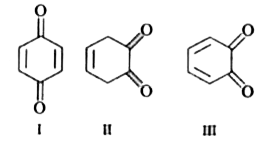The simplest alcohol that can exhibit enantiomerism:
1-propanol
2-butanol
2-propanol
1-butanol
The correct Answer is:B
To determine the simplest alcohol that can exhibit enantiomerism, we need to identify the alcohol that contains a chiral carbon atom. A chiral carbon is a carbon atom that is bonded to four different groups, leading to non-superimposable mirror images.
1. Understanding Chiral Centers:
- A chiral center (or chiral carbon) is a carbon atom that is attached to four different substituents. This configuration allows for the existence of two enantiomers (non-superimposable mirror images).
2. Analyzing Different Alcohols:
- We will evaluate several simple alcohols to find one that has a chiral carbon.
3. 1-Propanol:
- Structure: CH3-CH2-CH2OH
- Analysis: The carbon atoms in 1-propanol do not have four different substituents. Therefore, it does not have a chiral center and cannot exhibit enantiomerism.
4. 2-Butanol:
- Structure: CH3-CH(OH)-CH2-CH3
- Analysis: The second carbon (C2) has four different groups attached: a hydroxyl group (OH), a methyl group (CH3), a hydrogen (H), and an ethyl group (CH2-CH3). This carbon is a chiral center, allowing for the existence of enantiomers. Thus, 2-butanol can exhibit enantiomerism.
5. 2-Propanol:
- Structure: CH3-CHOH-CH3
- Analysis: The carbon with the hydroxyl group (C2) is attached to two identical methyl groups (CH3). Therefore, it does not have a chiral center and cannot exhibit enantiomerism.
6. 1-Butanol:
- Structure: CH3-CH2-CH2-CH2OH
- Analysis: Similar to 1-propanol, 1-butanol does not have a chiral center as there are no four different substituents on any carbon atom.
7. Conclusion:
- The only alcohol among the ones analyzed that can exhibit enantiomerism is 2-butanol because it contains a chiral carbon atom.
Final Answer:
The simplest alcohol that can exhibit enantiomerism is 2-butanol.
- A chiral center (or chiral carbon) is a carbon atom that is attached to four different substituents. This configuration allows for the existence of two enantiomers (non-superimposable mirror images).
- We will evaluate several simple alcohols to find one that has a chiral carbon.
- Structure: CH3-CH2-CH2OH
- Analysis: The carbon atoms in 1-propanol do not have four different substituents. Therefore, it does not have a chiral center and cannot exhibit enantiomerism.
- Structure: CH3-CH(OH)-CH2-CH3
- Analysis: The second carbon (C2) has four different groups attached: a hydroxyl group (OH), a methyl group (CH3), a hydrogen (H), and an ethyl group (CH2-CH3). This carbon is a chiral center, allowing for the existence of enantiomers. Thus, 2-butanol can exhibit enantiomerism.
- Structure: CH3-CHOH-CH3
- Analysis: The carbon with the hydroxyl group (C2) is attached to two identical methyl groups (CH3). Therefore, it does not have a chiral center and cannot exhibit enantiomerism.
- Structure: CH3-CH2-CH2-CH2OH
- Analysis: Similar to 1-propanol, 1-butanol does not have a chiral center as there are no four different substituents on any carbon atom.
- The only alcohol among the ones analyzed that can exhibit enantiomerism is 2-butanol because it contains a chiral carbon atom.
The simplest alcohol that can exhibit enantiomerism is 2-butanol.
Similar Questions
Knowledge Check
C5H12O is a monohydric alcohol . How many isomers of this alcohol are possible ? How many of these contain chiral centres as well as can exhibit enantiomerism ?
A8 and 3B6 and 2C4 and 2D12 and 4Which of the following compounds can exhibit enantiomerism?
A3-hydroxy propanoic acidB3-hydroxy butanoic acidC4-hydroxy butanoic acidDnone of these
A compound is formed by the substitution of two chlorine atoms for two hydrogen atoms in propane. Write the structures of the isomers possible.
Give the IUPAC name of the isomer which can exhibit enantiomerism.
View Solution
Which among these can exhibit tautomerism?
View SolutionWhich among these can exhibit tautomerism ?

View SolutionWhich of the following can exhibit tautomerism:
View SolutionWhich among the given molecules can exhibit tautomerism ?

View SolutionGiven,

Which of the given compounds can exhibit tautomerism?
View Solution

